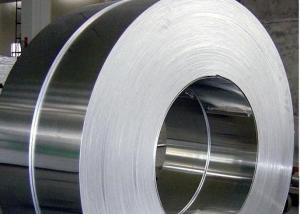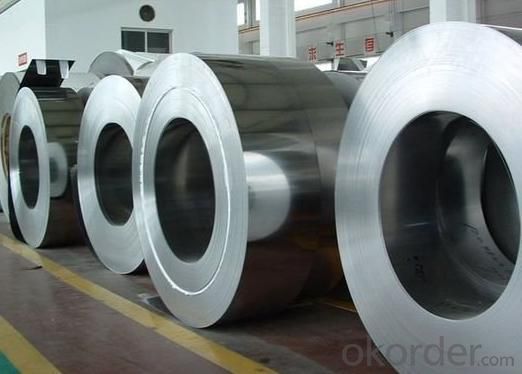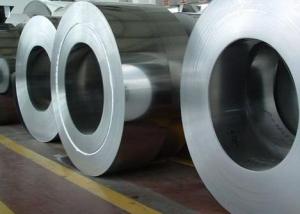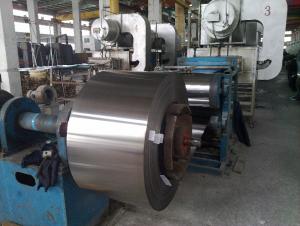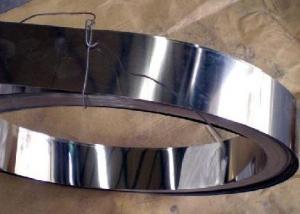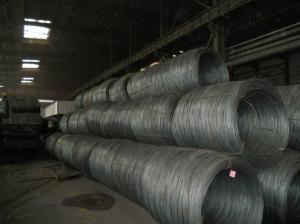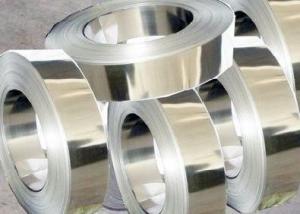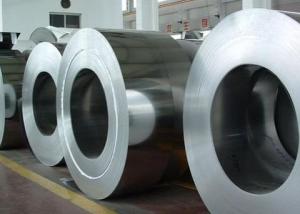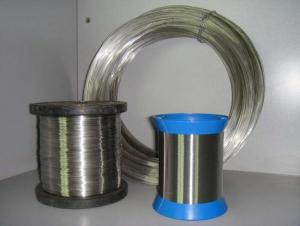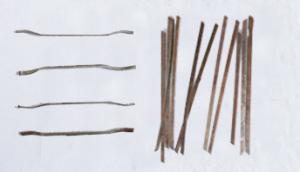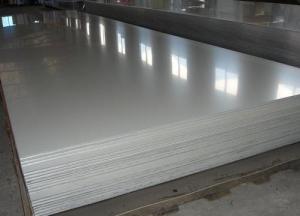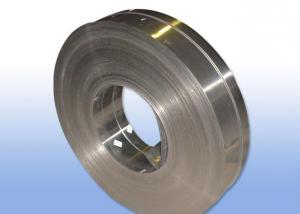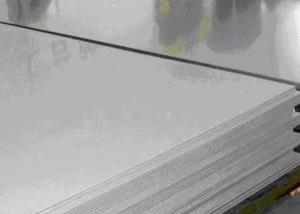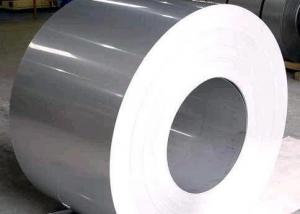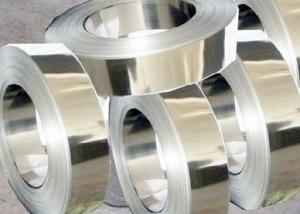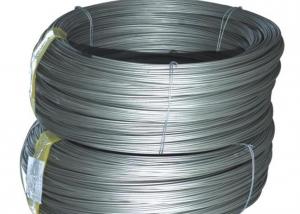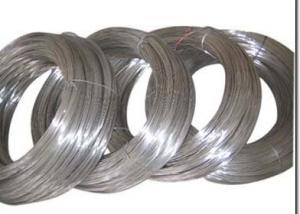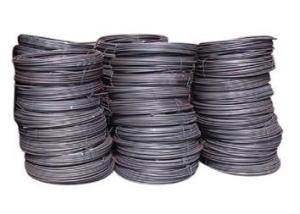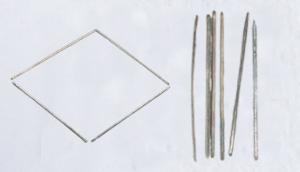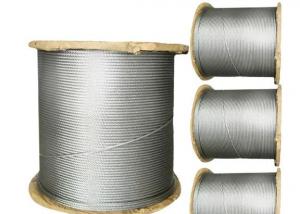430 Stainless Steel Strips
- Loading Port:
- China Main Port
- Payment Terms:
- TT or LC
- Min Order Qty:
- 1 Ton m.t.
- Supply Capability:
- 2000 Tons Per Month m.t./month
OKorder Service Pledge
OKorder Financial Service
You Might Also Like
430 Stainless Steel Strips
1. Chemical composition
|
C |
Si |
Mn |
P |
S |
Ni |
Cr |
|
max0.12 |
max1.00 |
max1.00 |
max0.04 |
max0.03 |
--- |
16.00-18.00 |
2. Mechanical properties
|
Yield Strength |
Tensile |
Elongation |
Hardness (HV) |
Hardness (HRB) |
|
≥205 |
≥420 |
≥22 |
≤200 |
≤88 |
3. Standard: AISI, ASTM, GB, EN, DIN, JIS
4. Surface: 2B, NO.1, BA, NO.4, Hairline, SB, Mirror finish, Anti-skid, Cherkered etc.
5. Size: Thickness: 0.3-3mm (cold rolled), 3-40mm (hot rolled)
Width: 18-600mm.
Length: As customers' request.
6. MOQ: 1 Ton
7. Payment terms: T/T or L/C
8. Packing: Seaworthy package with wooden or Iron pallets with the paper and the steel strip, or as customers' request.
9. Delivery time: Usually about 7 days after we confirming the order, or according to your quantity.
If you have any question or demand, pls feel free to contact me.
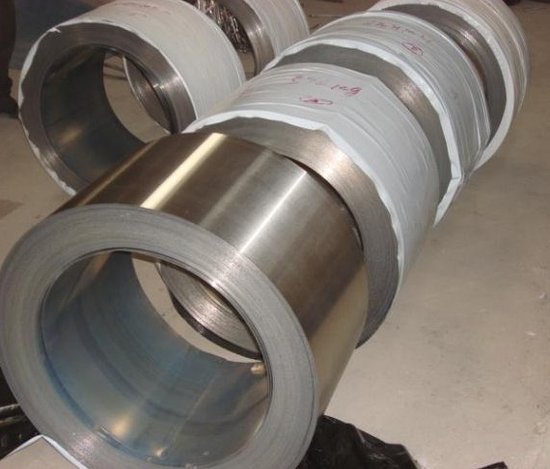
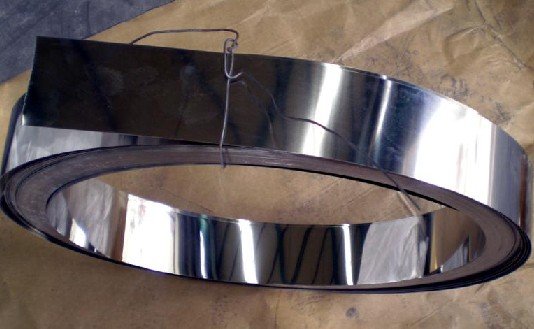
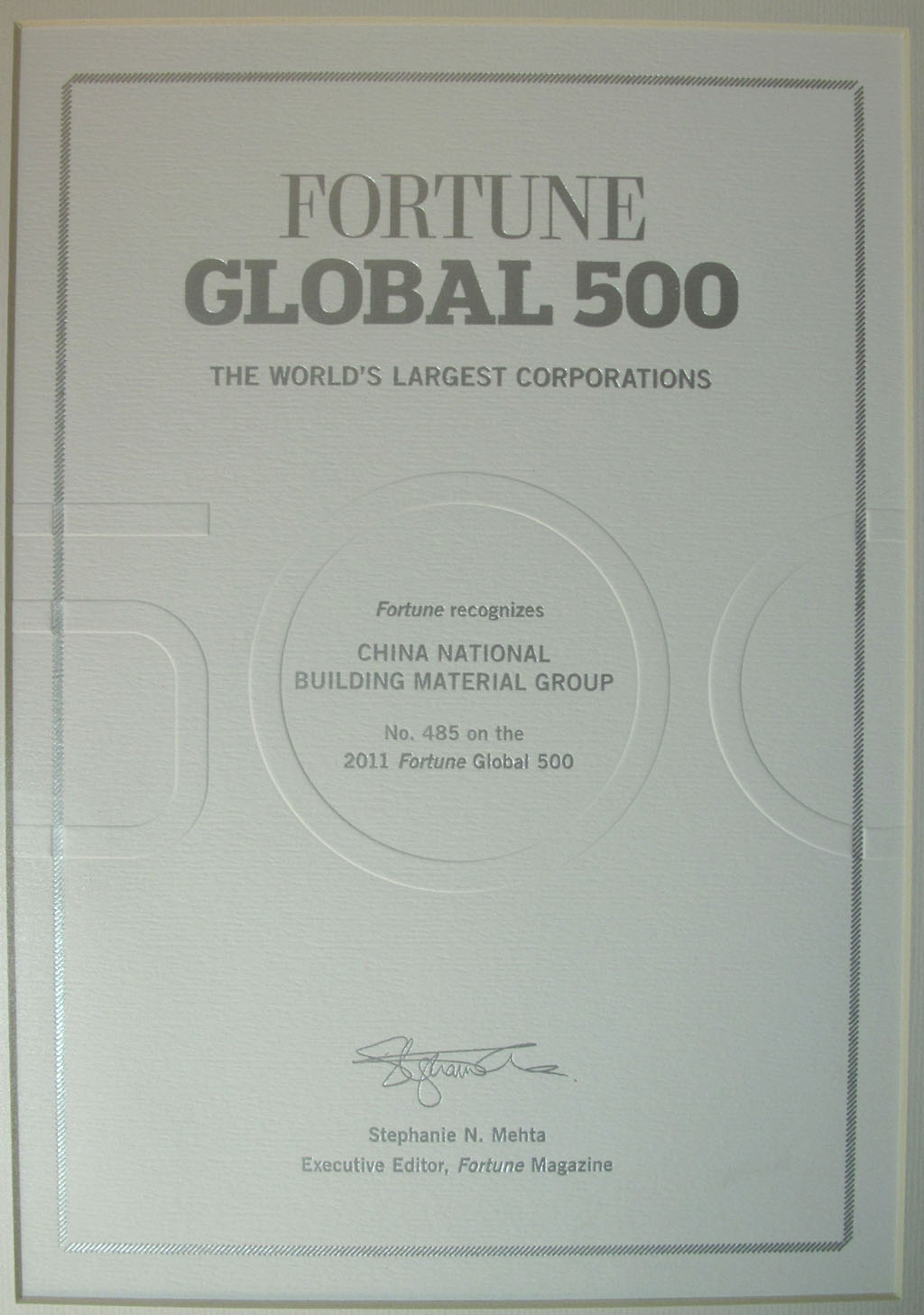
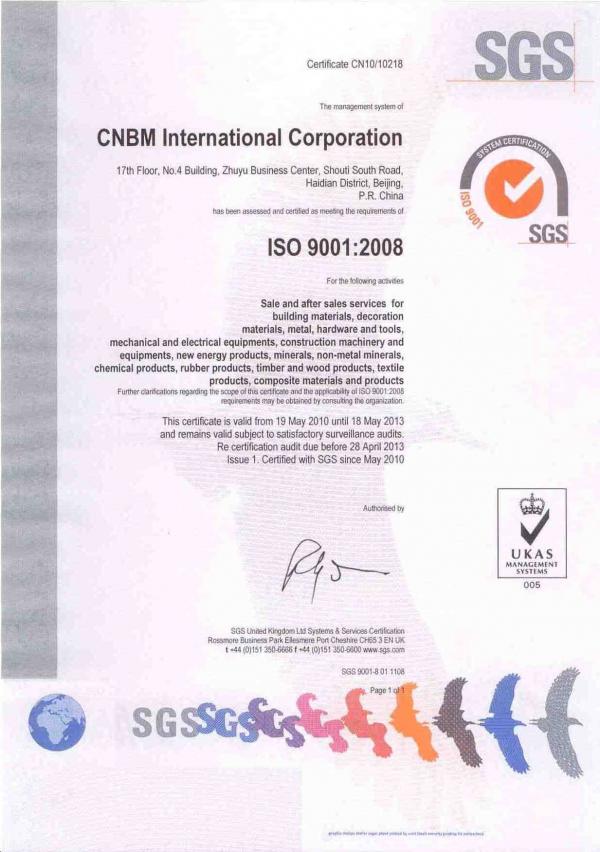
- Q: Stainless steel how to make copper imitation drawing effect?
- Draw the wire first, and then send it to the color. Look, the product you want is made of stainless steel. Stainless steel products, processing line is yao.
- Q: What are the different wire tensile strength options available for stainless steel wire?
- Stainless steel wire is known for its strength and durability, making it a popular choice for various applications. When it comes to wire tensile strength, stainless steel wires come in a range of options to suit different needs. The tensile strength of stainless steel wire is typically measured in pounds per square inch (psi) or megapascals (MPa). The options available for wire tensile strength can vary depending on the specific grade and alloy of stainless steel used. Some common tensile strength options for stainless steel wire include: 1. Low Tensile Strength: Stainless steel wires with low tensile strength are generally used in applications where strength is not a critical factor. These wires typically have tensile strengths ranging from 50,000 to 75,000 psi or 345 to 515 MPa. They are often used in less demanding applications such as craft projects, decorative purposes, or light-duty fencing. 2. Medium Tensile Strength: Stainless steel wires with medium tensile strength are commonly used in a wide range of applications. These wires typically have tensile strengths ranging from 75,000 to 150,000 psi or 515 to 1,035 MPa. They are suitable for applications such as wire mesh, cable ropes, springs, and general-purpose wire products. 3. High Tensile Strength: Stainless steel wires with high tensile strength are designed for applications that require exceptional strength and durability. These wires typically have tensile strengths exceeding 150,000 psi or 1,035 MPa. They are commonly used in demanding applications such as aerospace, automotive, marine, and industrial settings where high-stress conditions are present. It is important to choose the appropriate tensile strength option based on the specific requirements of your application. Factors such as load-bearing capacity, resistance to corrosion, and environmental conditions should be considered when selecting the right stainless steel wire tensile strength. Consulting with a knowledgeable supplier or engineer can help ensure that you choose the most suitable stainless steel wire for your needs.
- Q: What are the different types of stainless steel wire ropes used in telecommunications?
- There are several types of stainless steel wire ropes used in telecommunications, including 1x7, 1x19, and 7x7 constructions. These wire rope designs offer different strengths, flexibility, and durability to meet the specific needs of telecommunications applications.
- Q: What are the different types of stainless steel wire for different levels of strength?
- Stainless steel wire comes in various types with different levels of strength to suit various applications. The most common types of stainless steel wire for different levels of strength include: 1. Austenitic Stainless Steel Wire: This type of stainless steel wire is the most widely used due to its excellent corrosion resistance and high tensile strength. It is commonly used in applications where high strength and resistance to corrosion are required, such as in marine environments or chemical processing industries. 2. Martensitic Stainless Steel Wire: Martensitic stainless steel wire offers higher strength and hardness compared to austenitic stainless steel. It is often used in applications that require higher levels of mechanical strength, such as springs, surgical instruments, or cutlery. 3. Duplex Stainless Steel Wire: Duplex stainless steel wire exhibits a combination of properties from both austenitic and ferritic stainless steel. It offers higher strength than austenitic stainless steel while maintaining good resistance to corrosion. It is commonly used in industries such as oil and gas, chemical processing, or desalination plants. 4. Ferritic Stainless Steel Wire: Ferritic stainless steel wire possesses high tensile strength, but lower corrosion resistance compared to austenitic stainless steel. It is commonly used in applications that require high strength but are not exposed to corrosive environments, such as automotive exhaust systems or decorative applications. 5. Precipitation Hardening Stainless Steel Wire: Precipitation hardening stainless steel wire is heat-treated to achieve high strength levels. It is often used in aerospace, nuclear, or other high-performance industries where both strength and corrosion resistance are crucial. It is important to consider the specific requirements of the intended application when selecting the appropriate type of stainless steel wire. Factors such as strength, corrosion resistance, temperature resistance, and cost should be taken into account to ensure optimal performance. Consulting with a materials engineer or stainless steel wire manufacturer can provide further guidance in selecting the right type for your particular needs.
- Q: Can stainless steel wire be used for hanging signs or banners?
- Yes, stainless steel wire can be used for hanging signs or banners. Stainless steel is known for its strength, durability, and resistance to corrosion, making it a suitable choice for outdoor applications. It can provide reliable support and withstand various weather conditions, ensuring the longevity of the signs or banners.
- Q: Can stainless steel wire be used for springs in the construction industry?
- Yes, stainless steel wire can be used for springs in the construction industry. Stainless steel is known for its durability, corrosion resistance, and high tensile strength, making it a suitable material for springs that require strength and longevity. Additionally, stainless steel springs can withstand harsh environmental conditions and are commonly used in various construction applications such as doors, windows, and mechanical systems.
- Q: Is stainless steel wire suitable for high-temperature applications?
- Yes, stainless steel wire is suitable for high-temperature applications. Stainless steel has excellent heat resistance properties, allowing it to maintain its strength and integrity even at elevated temperatures. It is commonly used in industries such as aerospace, automotive, and manufacturing, where high temperatures are involved.
- Q: What are the different types of stainless steel wire for different levels of malleability?
- There are several types of stainless steel wire available, each with varying levels of malleability. Some common types include austenitic stainless steel wire, which is highly malleable and has excellent corrosion resistance; ferritic stainless steel wire, which is less malleable but still offers good corrosion resistance; and martensitic stainless steel wire, which is the least malleable but provides high strength and hardness.
- Q: Is stainless steel wire resistant to chemicals?
- Stainless steel wire is generally resistant to chemicals. Its corrosion-resistant properties are well-known, making it highly resistant to various chemicals. It can withstand acids, alkalis, solvents, and other chemical substances, making it suitable for environments where exposure to chemicals is common. However, the level of resistance may vary depending on the specific grade and composition of the stainless steel wire. Prolonged exposure to certain aggressive chemicals or extreme conditions can still cause some corrosion or damage. Therefore, it is advisable to consult the manufacturer or supplier for specific information regarding the resistance of stainless steel wire to the chemicals you plan to use it with.
- Q: What are the different wire weaving patterns available for stainless steel wire?
- There are several wire weaving patterns available for stainless steel wire, including but not limited to the basic weave, the twisted weave, the double spiral weave, the diamond weave, the flat weave, and the Viking knit weave. Each pattern creates a unique texture and design, allowing for endless possibilities in wire jewelry making and other crafts.
1. Manufacturer Overview
| Location | Shandong,China |
| Year Established | 2005 |
| Annual Output Value | Above US$5.3 Million |
| Main Markets | Europe, China |
| Company Certifications | ISO9001:2000 |
2. Manufacturer Certificates
| a) Certification Name | |
| Range | |
| Reference | |
| Validity Period |
3. Manufacturer Capability
| a) Trade Capacity | |
| Nearest Port | Tian Jin |
| Export Percentage | 30% |
| No.of Employees in Trade Department | 40 People |
| Language Spoken: | English;Chinese |
| b) Factory Information | |
| Factory Size: | Above 50,000 square meters |
| No. of Production Lines | Above 8 |
| Contract Manufacturing | OEM Service Offered;Design Service Offered |
| Product Price Range | Average |
Send your message to us
430 Stainless Steel Strips
- Loading Port:
- China Main Port
- Payment Terms:
- TT or LC
- Min Order Qty:
- 1 Ton m.t.
- Supply Capability:
- 2000 Tons Per Month m.t./month
OKorder Service Pledge
OKorder Financial Service
Similar products
Hot products
Hot Searches
Related keywords
